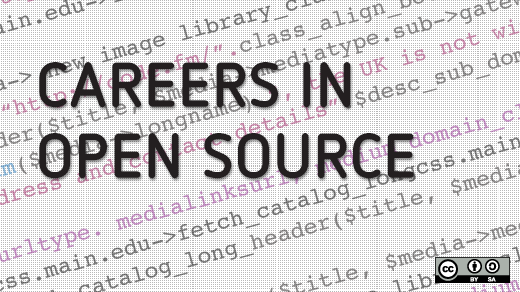The Friday afternoon I received an offer for an internship at Red Hat was hands down one of the most important days of my career. Every time people asked me where I was working and I saw their reactions when I told them, I knew I was in a fortunate position.
Just look at all the headlines surrounding open source today: Facebook is opening its hardware, Tesla is opening its patents, even Apple has a page on its website dedicated to the open source projects it implements and contributes to.
Open source is everywhere nowadays and not just in the software industry. It’s more than just open source code, it's a way and philosophy of working on and developing products. Being able to experience this development model first hand is truly fascinating. The ability to build secure and stable software that integrates with so many standards and other software platforms is no easy task, yet the engineers and programmers working with hundreds of people in the open source community make it happen day after day. This collaboration between Red Hat software engineers and the greater open source community has led me to learn some valuable lessons while working for an open source company. The first lesson I’ve learned is that people seem to have different interpretations of how to live and subscribe to being open source.
It seems like with any philosophy or religion, the open source philosophy is, for a better word, open to interpretation. I know many will argue that there shouldn’t be any difference in interpretation, however, the reality is there are a variety of opinions when it comes to what it means to be open source and how to live by that philosophy. Some seem to believe that those who subscribe to the open source way must do everything they can to only use open source products. Others feel that they can still advocate for open source while living their lives using some "closed source" devices or solutions such as iPhones, Playstations, and Skype. It’s an interesting debate that rages on in various online forums within the open source community as well as in the business community surrounding it, which leads to the second lesson I’ve learned: there's difference between open source companies and proprietary companies that deal in open source.
The same difference of interpretation in the community can translate itself directly into the business practices of a company. At Red Hat, all of our products are open source. It is one of the only true open source companies out there and arguably the most successful open source company, having crossed the billion dollar mark in revenue two years ago. There are other companies that deal in open source as well, however many of them are not open source companies. Take Google for example, they released Android as an open source project, however, they have made handset makers sign agreements to make sure the use of Google’s proprietary apps are included in the phone’s software package. They’ve also locked down other functionality in Android as well, making it hard to argue that it’s a truly open source platform. Google has, like others, called into question what really defines a project as being truly open source since there is so much argument over whether Android is truly open source.
So, which definition of open source is correct? What type of businesses will win out with open source? These questions now seem more important than ever before. It is clear that while open source is here to stay, the open source model that Red Hat has built and relied on may be harder to implement across the enterprise and consumer industries. There are many successful open source companies out there today, however, these companies aren’t anywhere near the size or scope of Google, Apple, Amazon, IBM, or Facebook. This point leads me to the third lesson I have learned while being at Red Hat: don’t underestimate the power of an open source company. Red Hat provides valuable software and support to our customers and can make substantial revenue while promoting open source solutions to the world. It would be premature and naive to say that this model could only work for a company like Red Hat. As long as a company can provide value to a customer with its products and support, which outweighs the fact that customers could have the product for free, that company will have the potential to succeed.
As I go back to N.C. State University in the fall, the lessons I have learned while at Red Hat will certainly stick with me when I venture out into the job market. My advice to anyone looking at their career path, especially if it involves the technology sector, is to learn about open source, to learn as much as they can. More and more companies, especially those in the technology sector, are focusing on open source and want their employees to be able to articulate what it is and understand how it works. For anyone really interested in the open source model, I’d advise working for an open source company. Red Hat is certainly a fantastic company to look at, but there are other companies out there as well. As my time at Red Hat is coming to an end, one thing has become more clear every day: open source is having a huge impact on our society and will certainly have an even larger impact in the future.
Read more articles like this one about young professionals in open source.





2 Comments